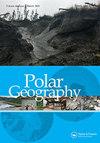Public perceptions of non-native plant species on a Chilean sub-Antarctic island
IF 1.6
Q3 GEOGRAPHY, PHYSICAL
引用次数: 4
Abstract
ABSTRACT Humans are the main drivers of the introduction, establishment and spread of non-native species worldwide but they have traditionally been excluded from management. Nowadays, the social component of non-native species is increasingly considered. In this paper, we investigated understanding, perceptions and attitudes towards management of non-native herbaceous plant species on Navarino, a remote Chilean sub-Antarctic island. Overall, our study showed a general understanding of the non-native species concept among the interviewees but revealed a lack of consciousness regarding non-native plants species in the local context. Interestingly, our study also revealed many positive values associated with non-native plants species on Navarino, particularly the esthetic value. Whilst some non-native plants were strictly associated with positive values, such as common daisy (Bellis perennis) and white clover (Trifolium repens), most species were associated with conflicting values. As a key result, our study lastly showed that most interviewees were indifferent about the management of the non-native herbaceous plant species. We, therefore, suggest (i) increasing the awareness of stakeholders with respect to non-native plants, (ii) incorporating stakeholder’s values into future management decisions and (iii) considering the strategic location of Navarino Island as a potential stepping stone for the dispersion of non-native plants species towards the Antarctic.公众对智利亚南极岛屿上非本地植物物种的看法
人类是世界范围内非本地物种引进、建立和传播的主要驱动力,但人类传统上被排除在管理之外。目前,非本地物种的社会成分越来越受到重视。本文调查了智利偏远亚南极岛屿纳瓦里诺对非本地草本植物物种管理的认识、认知和态度。总体而言,我们的研究显示受访者对非本地物种的概念有大致的了解,但对本地背景下的非本地植物物种缺乏认识。有趣的是,我们的研究还揭示了与纳瓦里诺非本地植物物种相关的许多积极价值,特别是美学价值。虽然一些非本地植物与正值严格相关,如普通雏菊(Bellis perennis)和白三叶草(Trifolium repens),但大多数物种与冲突值相关。最后,我们的研究结果表明,大多数受访者对非本地草本植物物种的管理漠不关心。因此,我们建议(i)提高利益相关者对非本地植物的认识;(ii)将利益相关者的价值观纳入未来的管理决策;(iii)考虑纳瓦里诺岛的战略位置,作为非本地植物物种向南极扩散的潜在垫脚石。
本文章由计算机程序翻译,如有差异,请以英文原文为准。
求助全文
约1分钟内获得全文
求助全文
来源期刊

Polar Geography
GEOGRAPHY, PHYSICAL-
CiteScore
5.30
自引率
0.00%
发文量
13
期刊介绍:
Polar Geographyis a quarterly publication that offers a venue for scholarly research on the physical and human aspects of the Polar Regions. The journal seeks to address the component interplay of the natural systems, the complex historical, political, economic, cultural, diplomatic, and security issues, and the interchange amongst them. As such, the journal welcomes comparative approaches, critical scholarship, and alternative and disparate perspectives from around the globe. The journal offers scientists a venue for publishing longer papers such as might result from distillation of a thesis, or review papers that place in global context results from coordinated national and international efforts currently underway in both Polar Regions.
 求助内容:
求助内容: 应助结果提醒方式:
应助结果提醒方式:


